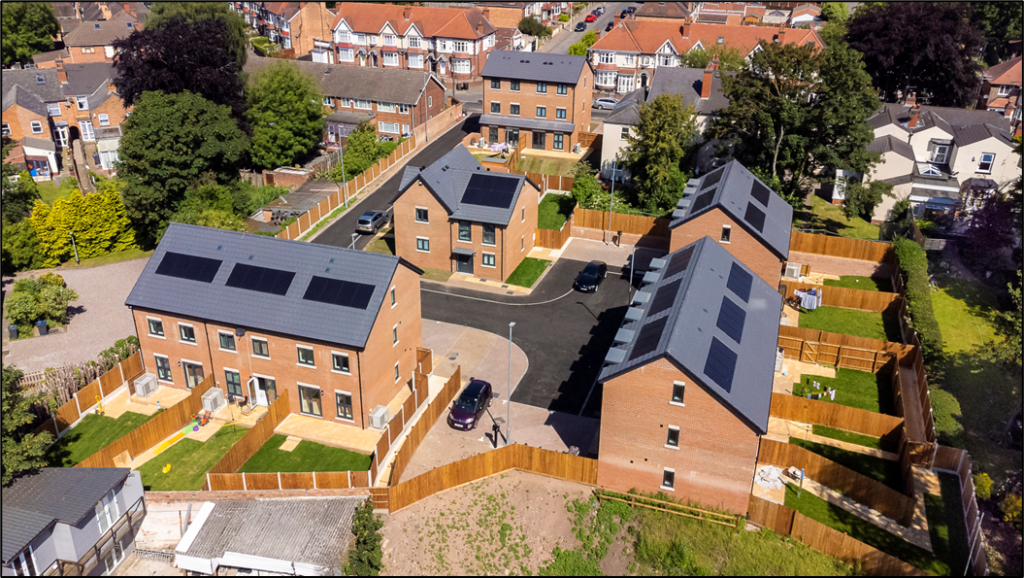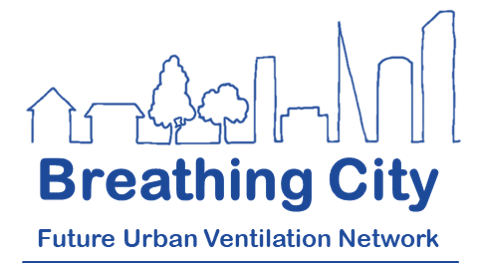The projects funded by the Breathing City network have shared updates on their progress. Researchers received approximately £5,000 each to better understand how indoor air quality affects occupant health, how air quality metrics should be communicated and displayed, and how the new building standards affect indoor air quality.
‘Impact of different building standards on indoor air quality in homes’.
Dr. Monica Mateo-Garcia. Birmingham City University
This pilot study aims to monitor the indoor air quality of houses built under current Building Regulations with homes built under Future Homes Standard to compare the benefits and potential unintended risks.
Two sites developed by the housing association Midland Heart and built by the same contractor were selected for the study: one development located in Burton-on-Trent, built under Part L 2013 Building Regulations, and one development in Handsworth, Birmingham, built meeting Future Homes Standard. Both sites share the same house types and construction methods, making them ideal for comparing and understanding the impact of new building regulations in indoor air quality.
Houses in both developments have been monitored pre-occupation (for a period of 1 to 3 months) and post-occupation (for a period of 4 months). Monitoring concluded at the end of September. Data has been retrieved from the sensors and is currently being processed for data analysis and visualization. Early results show the importance of ventilation types and user behaviour in indoor environmental quality.

‘Ventilation, indoor air quality and people health in care homes’.
Dr. Hong Yang. University of Reading
Approximately 0.4 million people live in care homes in the UK. However, air quality in care homes is rarely researched. Prolonged exposure to air pollutants, even at low concentrations, may adversely affect human health, well-being, and quality of life and increase medical expenditures. In this project, we have used recently developed low-cost sensors to measure air quality in three care homes in Reading, and estimate ventilation rates, along with the surveys of residents’ health, to explore the ventilation, air pollution and health in care homes.
Our preliminary results indicated that the level of particulate matter (PM2.5) in care homes, in general, is below the WHO guideline. Around 45% of the surveyed old people agreed or strongly agreed that mechanical ventilation can improve indoor air quality in their rooms. We will continue to work on this project, collect more data and reach more comprehensive conclusion.

‘Real-time residential monitoring of children with suspected pollution related respiratory diseases’.
Dr. Jonny Higham. University of Liverpool
The University of Liverpool academics and researchers have been developing a large outdoor air quality network covering the whole of the city region. The network, comprised of 50 sensors, can capture real-time particulate matter concentrations. As part of the pilot project from FUVN, a new research strand combining strategically location sensor data with paediatric respiratory health data in partnership with Alder Hey Children’s Hospital has been developed. Through the installation of new air quality sensors outside children’s homes and schools, it has been possible to create correlations and connexions between the respiratory illness of individual children. In addition, researchers have captured samples of particulate matter and have analysed them using electron microscopes (image below); these analyses have provided great detail of the formations and chemical compositions of different concentrations of particulate matter in different regions of Liverpool. The project continues and is continually growing by the end of the year the team hope to have gained significant insights into the effects of outdoor air quality and respiratory illness in children.



